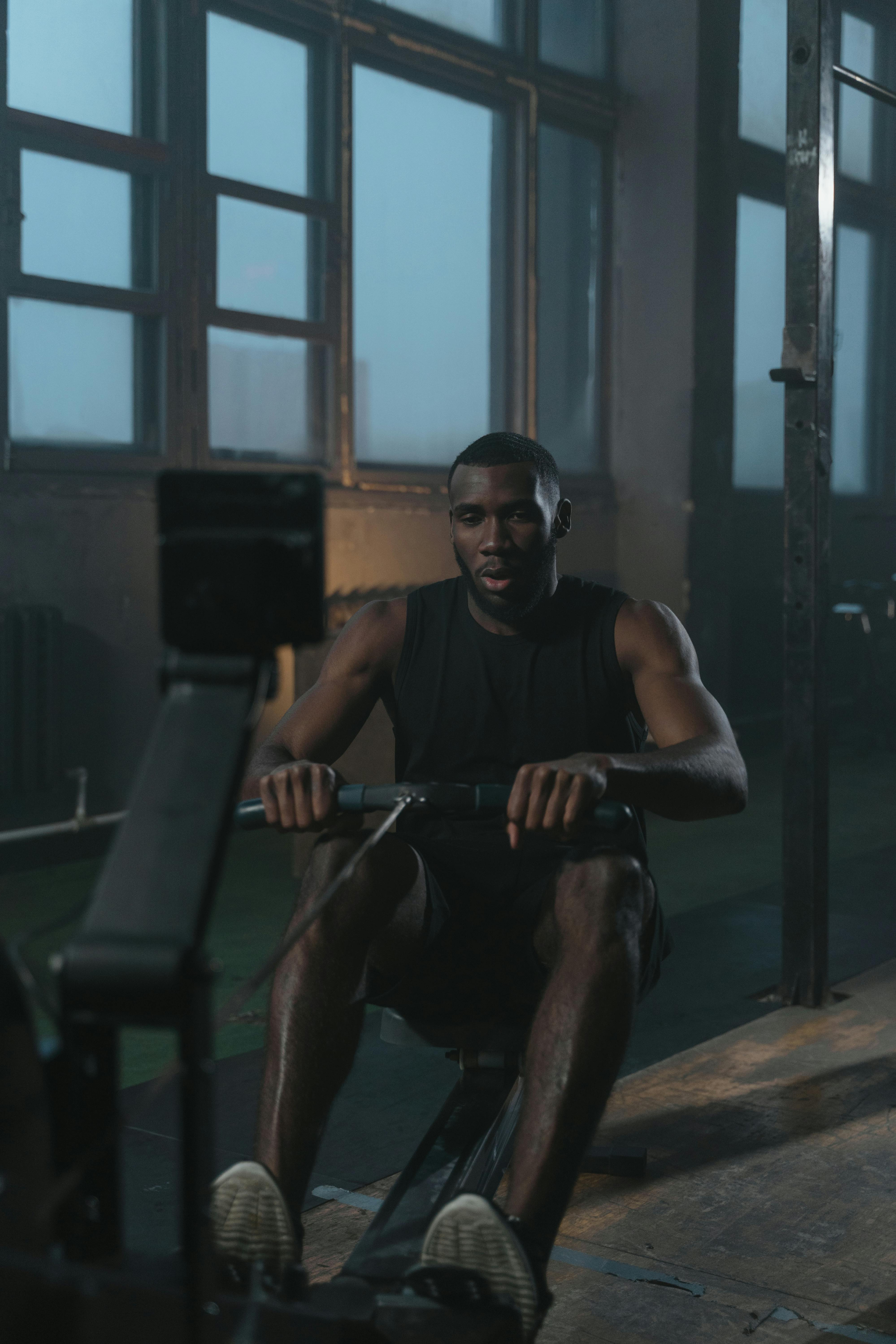Effective Push Pull Training Plan for 2025: Proven Strategies to Optimize Your Workout
As fitness enthusiasts continuously seek ways to enhance their workout routines, the push-pull training plan has emerged as a versatile and effective method for both beginners and seasoned athletes. This workout scheme focuses on alternating between push and pull exercises, offering a balanced approach to strength training and muscle building. The principles of this training plan emphasize not only hypertrophy—muscle growth—but also overall fitness and functional strength, making it an ideal choice for anyone aiming to optimize their fitness regimen in 2025.
The benefits of incorporating a push-pull routine into your workouts are numerous. Firstly, these workouts allow for efficient muscle recovery by alternating muscle groups, giving each adequate time to regenerate. Secondly, the structured approach aids in measuring progress, as different exercises can be easily tracked in your training journal. Lastly, a well-designed push-pull program offers variety, helping to maintain motivation and engagement in your fitness journey.
In this article, we will delve into effective push-pull training strategies focusing on various aspects such as workout routines, nutrition, and safety measures. You will learn essential training techniques, ideal exercises, and how to tailor your plan for optimal results. By the end, you’ll be equipped with the knowledge to make informed decisions regarding your fitness journey, all while enjoying the transformative power of a push-pull training routine.
Essential Push and Pull Workout Structures
Understanding the core of push-pull training is vital for creating an effective fitness program. This section outlines structured ways to implement push and pull workouts efficiently, laying a solid foundation for achieving your fitness goals.
Defining Push and Pull Exercises
The first step to creating a successful push-pull plan is identifying which movements classify as push and pull exercises. Push exercises primarily target muscles involved in extension, including your chest, shoulders, and triceps. Prominent examples include bench presses, shoulder presses, and tricep dips.
On the other hand, pull exercises involve muscles that assist with retraction, predominantly including the back and biceps. Key movements here would be pull-ups, bent-over rows, and bicep curls. Incorporating both types of exercises ensures a comprehensive approach to strength training, which is crucial for balanced muscle development.
Sample Push-Pull Weekly Routine
To get started, a common push-pull weekly routine might look like this:
- Day 1: Push Day – Focus on chest, shoulders, and triceps.
- Day 2: Pull Day – Emphasize back and biceps workouts.
- Day 3: Legs/Rest – Include lower body exercises or take a rest day.
- Day 4: Push Day – Repeat with varied exercises for progression.
- Day 5: Pull Day – Revisit pull exercises.
- Day 6 and 7: Recovery and Active Rest – Focus on mobility and light cardio.
This structure allows for adequate recovery between muscle groups, which is essential for muscle growth and avoiding overtraining.
Advanced Variations for Progressive Overload
To achieve continued results within your push-pull training plan, incorporating advanced variations is crucial. Progressive overload—the gradual increase in training volume or intensity—helps stimulate muscle adaptations.
Consider adding supersets, where you perform a push and pull exercise back-to-back, or adjusting the rest intervals between sets to maximize intensity. Utilizing techniques such as drop sets, where you gradually reduce the weight with each set to failure, can also enhance muscle engagement and stress adaptation. These variations not only break monotony but also challenge your muscles differently, promoting noticeable strength improvements.
Nutrition Strategies for Optimal Recovery
Nutrition plays a pivotal role in enhancing performance and recovery in any training program. After establishing a solid workout routine, understanding how to fuel your body effectively will significantly influence your results.
Importance of Pre and Post-Workout Meals
Prior to your workouts, consuming a balanced meal that combines complex carbohydrates with proteins is essential. Foods like oatmeal with protein powder or a banana with nut butter are excellent options, providing necessary energy for your training sessions.
Macronutrient Breakdown for Hypertrophy
For muscle growth—hypertrophy—the recommended macronutrient ratio is approximately 40% carbohydrates, 30% protein, and 30% fats. This balance ensures sufficient energy supply while promoting repair and muscle synthesis post-workout. Foods rich in lean proteins, whole grains, and healthy fats should be incorporated into your daily meals.
Hydration and Recovery Techniques
Proper hydration is just as important as nutrition. Ensuring sufficient fluid intake before and after workouts aids in muscle recovery and performance enhancement. Additionally, consider incorporating active recovery techniques such as foam rolling and stretching to facilitate muscle repair and prevent soreness.
Safety Measures in Push-Pull Training
To unlock the most benefits from your push-pull workout, it’s essential to adhere to safety measures throughout your training regimen. Staying injury-free will ensure a consistent and effective approach to your fitness journey.
Warming Up and Cool-Down Routines
Before engaging in high-intensity workouts, a proper warm-up is crucial. Incorporate dynamic stretches and light cardio like jogging or cycling for 5-10 minutes to prepare your muscles and joints. After completing your workout, cool down by stretching and allowing your heart rate to gradually decrease.
Common Mistakes and How to Avoid Them
One of the most common mistakes in push-pull training is improper form. This can lead to injuries and hinder muscle gains. Always focus on maintaining proper posture during lifts, and if you’re unsure, seek guidance from a personal trainer or tutorial resources. Additionally, listening to your body’s signals and allowing adequate rest for recovery is key to long-term success.
Sportverletzungen und Rückfußplanung
It’s also vital to implement injury prevention strategies within your plan. Regularly assess your training volume and ensure your excitement doesn’t lead to overtraining. This includes incorporating rest days, cross-training, and monitoring your progress to gauge when to adjust your workout intensity.
Measuring Progress and Adjustments
In any effective training regimen, tracking progress is vital. This allows you to evaluate what works best for you and make necessary adjustments as you advance.
Utilizing Training Journals and Apps
Keeping a training journal or utilizing fitness apps will help in documenting your workouts, including weights, sets, and reps. Having a visual representation of your progress motivates you and provides tangible results of your efforts.
Feedback and Adjustments
Regularly seek feedback from trainers or peers in your fitness community to identify areas for improvement or techniques to enhance your workouts. This feedback loop can significantly accelerate progress and help in gaining insights on adjusting your training parameters when needed.
Adapting Goals and Changing Routines
Fitness goals often evolve, and adapting your training plan is crucial. If you notice a plateau, consider changing your exercises or increasing training frequency. Keeping your routine dynamic not only helps circumvent monotony but also achieves optimal results in strength and muscle definition.
Q&A Section: Common Push-Pull Training Questions
How many times a week should I train using the push-pull method?
It’s generally recommended to follow a push-pull routine 3-5 times per week, allowing for adequate recovery between workouts. The frequency largely depends on your fitness level and overall goals.
Can I incorporate cardio into my push-pull routine?
Absolutely! Incorporating cardio can enhance your endurance and support overall fitness goals. Just ensure to balance your strength training and resist overtraining by scheduling cardio on alternate days or as part of your warm-up.
How can I measure progress effectively?
Utilize your training journal to track workouts, body measurements, and performance. Assess your strength progress by noting increases in weights lifted or reps performed. Regular fitness tests can also help define your muscle composition and endurance improvements.
What if I miss a workout session?
Missing a session occasionally is normal. Just ensure it doesn’t lead to prolonged breaks. Adjust your schedule to accommodate missed sessions and maintain your routine as best as you can moving forward.
Are there any special considerations for beginners?
Beginners should focus on mastering basic movements first, ensuring proper form and safety. Start with lower weights and gradually increase intensity. Utilizing body weight exercises is an excellent way to build foundational strength before adding resistance.

Conclusion
Implementing an effective push-pull training plan can set the foundation for significant progress in strength, endurance, and muscle definition. By understanding the structure of workouts, nutritional strategies, and safety measures, you’ll be well-equipped to achieve your fitness goals in 2025. Remember to continuously measure progress, make necessary adjustments, and stay motivated throughout your journey. With this comprehensive guide, your push-pull training can help you unlock new levels of personal fitness, while enjoying the benefits of a well-rounded and engaging workout routine.

